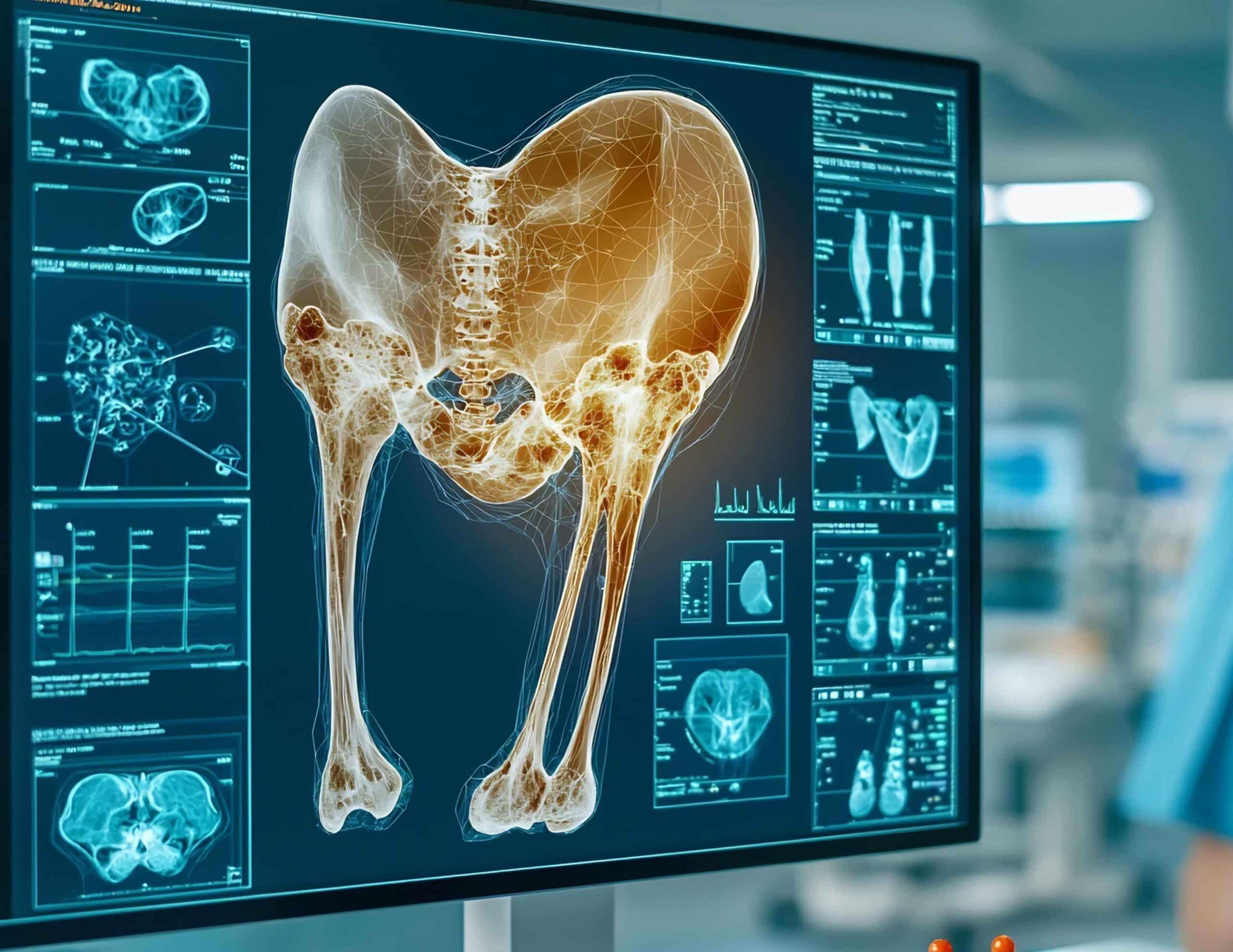Published on 02 September 2025 Hip surgery
What is hip dysplasia and how is it treated in young adults ?
The hip joint can be affected by various conditions, including hip dysplasia. This disorder, characterized by abnormal development of the joint, can lead to pain, instability while walking, and ultimately early-onset arthritis. Understanding the disease, its symptoms, and treatment options is essential for effective care.

What is hip dysplasia ?
Hip dysplasia, also known as Developmental Dysplasia of the Hip (DDH), is a congenital malformation of the hip (coxofemoral) joint. Normally, the femoral head fits snugly into the acetabulum, the bony socket of the pelvis. In dysplasia, the acetabulum is too shallow or underdeveloped, preventing proper positioning of the femoral head. This poor fit can result in joint instability, or even dislocation (complete dislodgment).
There are various degrees of severity:
- Mild dysplasia: The acetabulum is shallow, but the femoral head remains in place
- Subluxation: The femoral head is partially displaced from the acetabulum
- Dislocation: The femoral head is completely out of the socket
The causes of hip dysplasia are multifactorial, including genetic factors, breech fetal positioning, oligohydramnios (low amniotic fluid), or a family history of dysplasia (e.g., higher prevalence in regions like Brittany, France).
Good to know: Girls are more commonly affected than boys.
How to recognize hip dysplasia in young adults ?
Symptoms
In adolescents and young adults, undiagnosed childhood dysplasia often presents with symptoms that worsen over time. The main signs are limping, hip pain, or an abnormal gait.
Pain may be diffuse or focused in the groin and often worsens with physical activity like running or extended walking.
Over time, dysplasia can cause early-onset arthritis due to abnormal cartilage wear, resulting in chronic pain, joint stiffness, and reduced mobility. Hip dysplasia is a major risk factor for early hip osteoarthritis (coxarthrosis before age 45).
How is it diagnosed ?
Diagnosis in adolescents and young adults is primarily based on medical imaging:
- Pelvic X-ray: The most common diagnostic tool, allowing visualization of bone structure, acetabular depth, and femoral head positioning
- MRI (Magnetic Resonance Imaging): Often used for a more detailed evaluation of bones and soft tissues, especially cartilage and the labrum (acetabular rim)
- CT Arthrogram (Arthro-CT): Provides high-resolution images of the labrum and cartilage damage
Can hip dysplasia be treated ?
Treatment depends on the severity of the dysplasia and the patient’s age. The earlier the condition is treated, the better the outcomes.
Non-surgical options
These are usually reserved for mild cases without significant symptoms. The goal is to control pain and preserve the joint:
- Physiotherapy: Targeted exercises help strengthen the muscles around the hip, improving stability and reducing pain
- Activity modification: Patients may be advised to avoid high-impact sports or activities like running or contact sports, which could worsen joint wear
- Medical optimization: Pain relief and anti-inflammatory medications may be prescribed. Intra-articular injections (corticosteroids or hyaluronic acid) are also part of the treatment arsenal
Surgical treatments
Surgery becomes necessary when conservative treatments fail and pain interferes with daily life.
- Osteotomy: This corrective surgery aims to reorient the pelvic bones (pelvic osteotomy) or femur (femoral osteotomy) to better cover the femoral head with the acetabulum. The most common is periacetabular osteotomy, which involves cutting and repositioning the acetabulum for better alignment. This procedure is often recommended for adolescents and young adults to preserve the joint and delay arthritis onset
- Total Hip Replacement (THR) : When the joint is too damaged by arthritis, the only solution may be replacing it with an artificial prosthesis. THR is a major surgery involving the removal of damaged cartilage and replacement of the femoral head and acetabulum with implants. Although commonly associated with older adults, hip replacement is increasingly performed in younger adults with severe dysplasia and advanced arthritis
Our prevention tips
- Medical follow-up: If you experience hip pain or discomfort, consult a healthcare professional. Early diagnosis and treatment can make a significant difference in long-term quality of life
- Moderate physical activity: For those with mild dysplasia, low-impact activities such as swimming or cycling can help strengthen the muscles around the joint without overloading it
- Listen to your body: Pay attention to what your body is telling you. Persistent pain is not normal. The most effective preventive action is to take a proactive role in your health